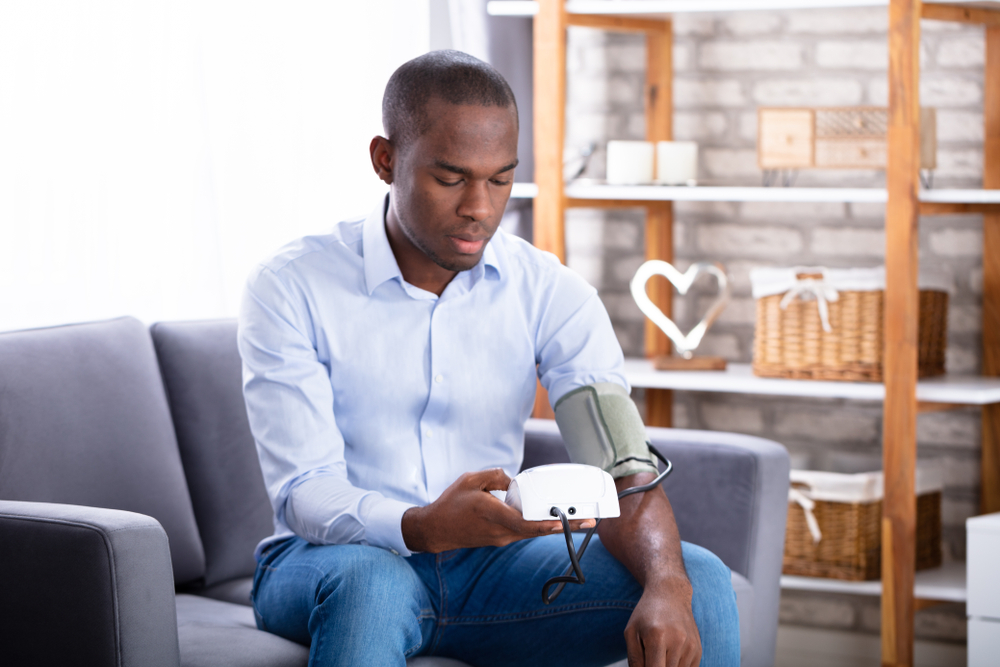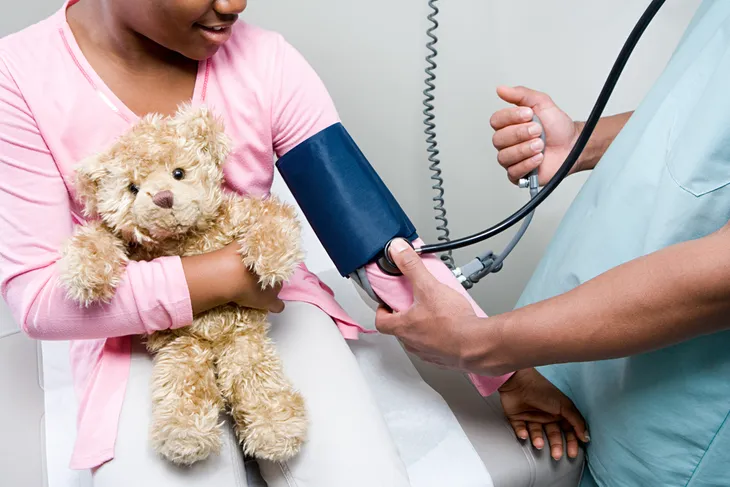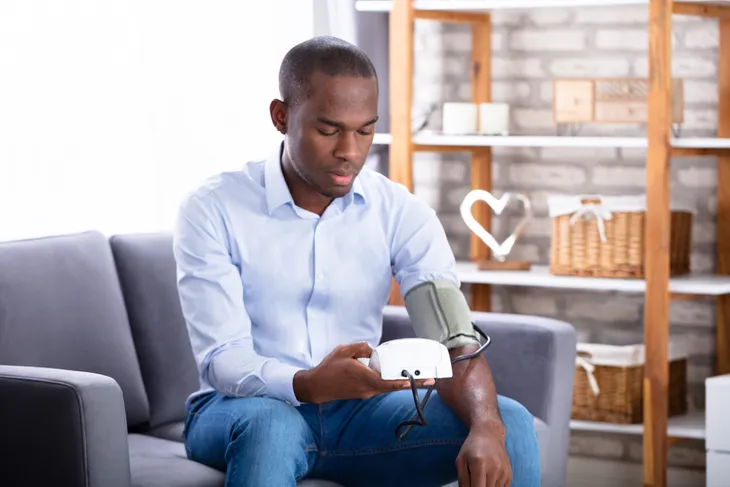High blood pressure also referred to as hypertension, is blood pressure that is higher than normal. It is normal for your blood pressure to change throughout the day based on your activities. But, if your blood pressure is above normal consistently you may have high blood pressure. Unfortunately, there aren’t many symptoms of high blood pressure, until there is serious damage. This is why the condition can easily go undetected.
Having your blood pressure checked regularly can help detect high blood pressure early. However, blood pressure readings can be confusing, especially if you don’t know what the numbers mean. In this article, we’ll break down how you can check your blood pressure at home and how to understand the blood pressure numbers. We’ll also go over what is considered acceptable blood pressure and we’ll break it down by age. Let’s explore these next!
Symptoms of High Blood Pressure
Many people who have high blood pressure don’t even show any signs or symptoms. Mayo Clinic explains that this can happen even when the blood pressure readings reach dangerously high levels. This is why it can be easy for it to go undetected.
Some people may experience headaches, shortness of breath, or nosebleeds. That said, these symptoms don’t usually occur until it has reached a severe or life-threatening stage. This is why having your blood pressure taken regularly is important. Mayo Clinic recommends at least every two years after age 18.
 Syda Productions / Shutterstock
Syda Productions / ShutterstockWhat Do Blood Pressure Numbers Mean?
If you’ve ever had your blood pressure taken you’ve problem heard verbiage such as “120 over 80” but have you ever wondered what the blood pressure numbers actually mean?
For starters, the first number is called systolic blood pressure. This number measures the pressure in your arteries when your heart is contracting or squeezing. The second number measures the pressure in your arteries when your heart is at rest in between beats. This is called diastolic blood pressure.
For example, if your blood pressure reads 120 systolic and 80 diastolic, your doctor will say “120 over 80”. If they write your blood pressure it will look like “120/80 mmHg”. For those that don’t know, “mmHg” means millimeters of mercury.
What Is Normal Blood Pressure for Kids?
If a child has high blood pressure and is younger than 6-years old, the cause is usually related to a medical condition. This could be a heart defect, kidney disease, genetic condition, or hormonal disorders. If a child is over the age of 6 and develops high blood pressure, the cause is likely due to excess weight, poor nutrition, and lack of exercise.
According to this blood pressure chart, here is what is considered normal blood pressure for kids:
- New born: systolic (60–90), diastolic (20–60)
- Infant: systolic(87–105), diastolic (53–66)
- Toddler: systolic(95–105), diastolic (53–66)
- Preschooler: systolic(95–110), diastolic (56–70)
- School-Aged: systolicChild (97–112), diastolic (57–71)
What Is Normal Blood Pressure for Women?
Did you know high blood pressure is common among women? Especially for women in their 40s, 50s, and 60s. In fact, women who have gone through menopause are at an even greater risk.
Health Harvard explains, “By the time they reach their 60s and 70s, 70% of women have high blood pressure. After age 75, that figure rises to nearly 80%, according to the CDC.” This is why prevention is so important! Here are the normal blood pressure readings for women by age:
- Age 18-39 (110/68 mm Hg)
- Age 40-59 (122/74 mm Hg)
- Age 60+ (139/68 mm Hg)
What Is Normal Blood Pressure for Men?
High blood pressure is also common in men and is more common in men until about age 45. From age 45 to 64, the percent of high blood pressure in men and women is relatively the same, and then women have a much higher percentage after that. Prevention is also very important for men just as it is for women. Here are the normal blood pressure readings for men by age:
- Age 18-39 (119/70 mm Hg)
- Age 40-59 (124/77 mm Hg)
- Age 60+ (133/69 mm Hg)
How To Check Your Blood Pressure at Home
It’s common to get your blood pressure checked at the doctor’s office. But did you know you can check it at home too? Better yet, it’s easy to do!
First, make sure you find a quiet place where you feel relaxed. WebMD, also recommends emptying your bladder first as a full bladder may affect your reading. If you’re wearing a long sleeve shirt, roll it up, or if you’re wearing tight-sleeved clothing, you’ll want to remove it. If you have a digital blood pressure monitor follow the instructions in the booklet.
What Causes High Blood Pressure?
So what causes high blood pressure anyway? Common causes of hypertension include being overweight, lack of nutrition and eating a poor diet, lack of exercise, and stress.
Some medical conditions can cause high blood pressure too. This includes diabetes, sleep apnea, hormonal conditions, thyroid problems, and kidney disease. If your doctor determines you do have high blood pressure, they’ll be able to help you determine the cause.
High Blood Pressure Complications
High blood pressure can cause several complications. For starters, it can damage your blood vessels and can also put a lot of stress on vital organs like your heart and brain. It is also known to increase your risk for stroke, heart disease, and kidney disease.
Mayo Clinic explains, “The higher your blood pressure and the longer it goes uncontrolled, the greater the damage.” This is why prevention and early detection are so important.
How To Prevent High Blood Pressure
The good news is there are several things you can start doing now to prevent high blood pressure. This includes eating a healthy diet rich in foods that are good for your heart. Some of these foods include fish that contains omega-3 fatty acids, leafy greens, berries, oats, and more!
Other ways to help prevent high blood pressure include maintaining a healthy weight, exercising regularly, watching your salt intake, quitting smoking, reducing stress, and consuming alcohol in moderation.
 Source: Shutterstock
Source: ShutterstockHow To Treat High Blood Pressure
If your doctor determines you do have high blood pressure they may recommend that you make some lifestyle changes. These changes are the same steps you can take to prevent high blood pressure like exercising, eating a healthy diet, and controlling your weight.
In some cases, lifestyle changes aren’t enough. If this is the case, your doctor may recommend medication to help lower your blood pressure. Speak with your doctor to have your blood pressure checked and to find out more ways to prevent high blood pressure from happening.
Top At-Home Monitors
The American Heart Association recommends at-home monitoring for anyone who suffers with high blood pressure or hypertension. An invaluable tool in maintaining good health, home monitoring is intended to complement your regular doctor’s appointments.
Wrist and finger-style monitors are generally considered to be less reliable than bicep-style monitors. With that in mind, here are the five best at-home bicep cuff blood pressure monitors.
1. QardioArm
Price: $100
The QardioArm blood pressure monitor is the best at-home device that money can buy. This high-tech monitor boasts automatic cloud storage, irregular heartbeat detection, and wireless functionality with up to eight phones. The setup procedure is simple and user-friendly, making it a great solution for anyone who is less confident with complex software. Moreover, the device offers sync compatibility with both major lifestyle platforms, Apple and Samsung Health. Plus, its sleek appearance is a definite plus.
The QardioArm monitor comes with the QardioApp. This app allows users to establish target blood pressure for your family and set reminders to take those all-important readings.
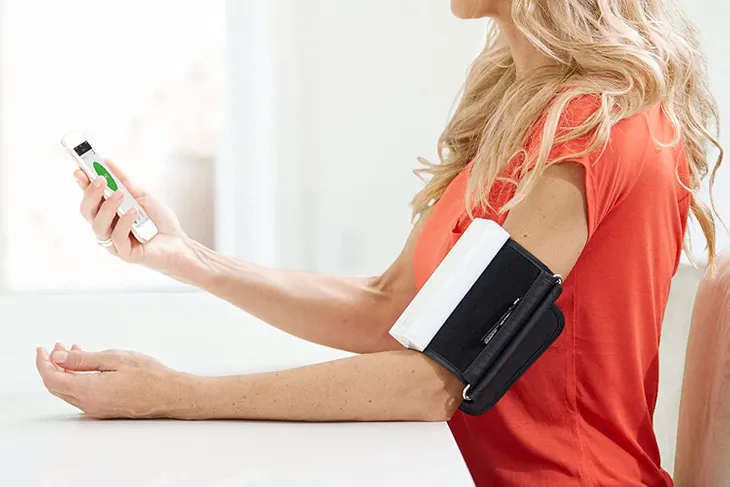 Source: Amazon
Source: Amazon2. Withings BPM Connect
Price: $99
Withings BPM Connect is another device that can sync seamlessly with your smartphone and health platform profile.
The setup process is slightly more long-winded than the QardioArm monitor, though this monitor’s other core features are comparable. The BPM Connect’s biggest selling point is its companion app, which offers the same functionality as QardioArm. One feature that does stand out is the color-coded feedback after a reading is taken. This feedback is based on recommendations from the European Society of Hypertension.
The BPM Connect app itself is incredibly versatile. As long as your smartphone is on the same Wi-Fi network as the monitor, your results are automatically uploaded once a measurement is taken. You can also save separate profiles for each family member to store individual feedback.
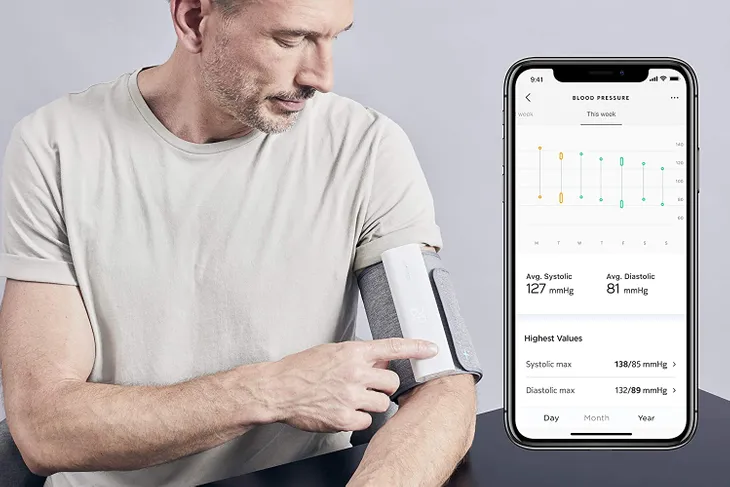 Source: Amazon
Source: Amazon3. Omron HEM 7130 L
Price: $110
Omron is a well-established company in the at-home health monitor industry. Their HEM 7130 L device stands out as one of the best blood pressure monitors on the market.
This monitor uses “body movement detection” to help address the problem of inaccurate home readings. This feature works by prompting the user to take another reading when the initial reading may be inaccurate due to movement in the arm.
The device doesn’t offer the same app functionality as the Withings BPM Connect or QardioArm, nor does it boast such a slick appearance. However, the core features are similarly impressive across all three devices. The Omron monitor includes hypertension indicators, rhythm monitors, and body movement detection.
The only real drawback to this monitor is its lack of wireless capability. Without wireless, it relies on a USB 4 connection to upload information to laptops and other devices.
The price of the Omron monitor is arguably its biggest selling point. You will not find a more feature-packed monitor at $65. While the Omron doesn’t quite fall into the budget category, it is a great option for those who need to keep an eye on price when choosing an at-home blood pressure monitor.
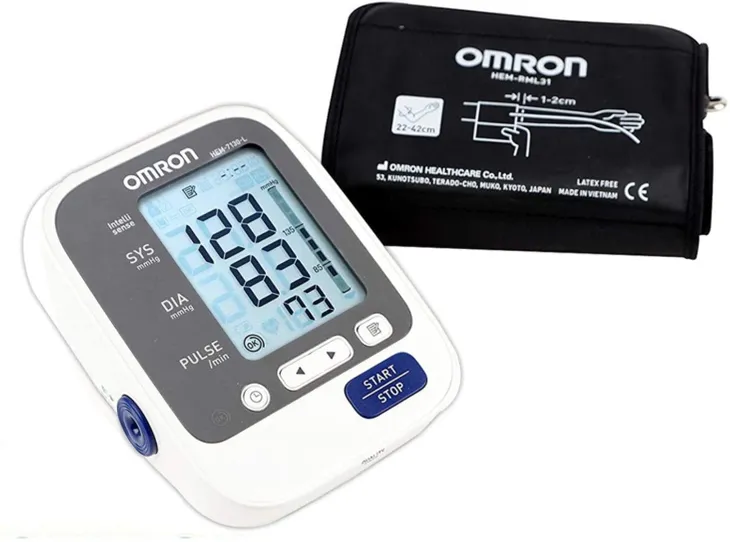 Source: Amazon
Source: AmazonTips for Using At-Home Blood Pressure Monitors
Taking an accurate blood pressure reading at home can be surprisingly tricky. Harvard Health have identified five key areas where people go wrong, to come up with the following tips:
- Do not drink caffeine or smoke 30 minutes before the test.
- Make sure you sit quietly and be still for five minutes before the test.
- Do not talk while you’re taking a reading.
- Measure twice, with a five-minute break in between readings.
- Do not place the cuff over any clothing material and make sure it covers most of your upper arm.
Remember to adhere to the manufacturer’s guidelines when using your at-home blood pressure monitor. If you have any concerns about your blood pressure, make an appointment to see your general practitioner.
